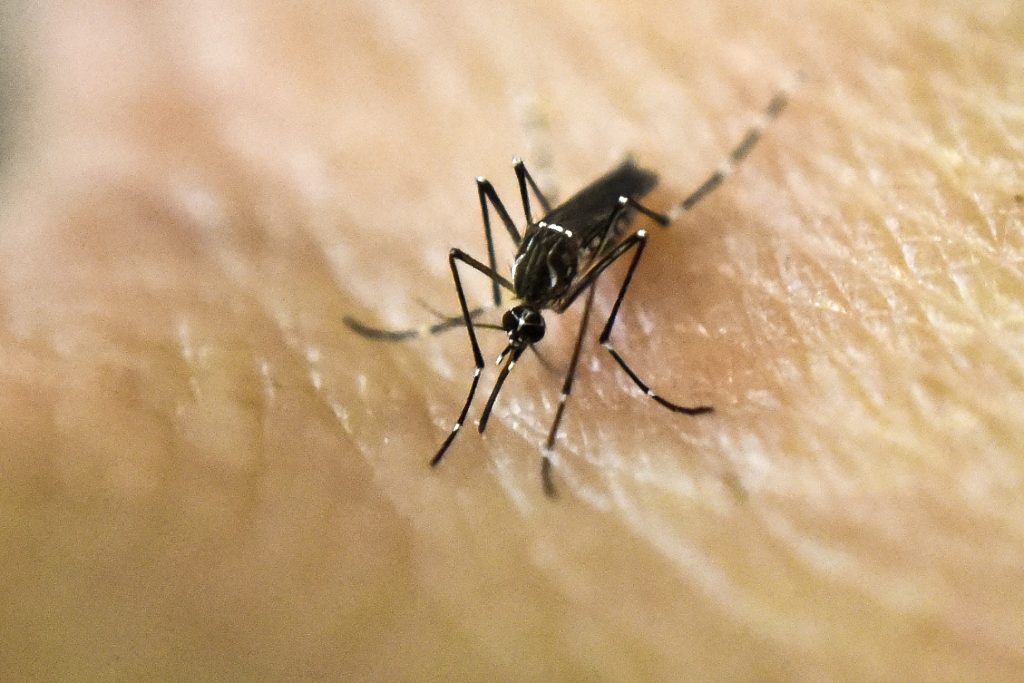
by Marlowe HOOD
PARIS,France (AFP) — As Europe and the United States brace for the likely arrival of the Zika virus from Latin America this summer, experts warn global warming may accelerate the spread of mosquito-borne disease.
Rising temperatures are a threat in more ways than one, they cautioned ahead of a major gathering of Zika researchers in Paris next week.
“Climate change has contributed to the expansion of the range of mosquitoes,” said Moritz Kraemer, an infectious diseases specialist at Oxford University.
Kraemer was the lead author of a study mapping the 2015 habitats of two warm-weather species — both of which have gained ground in recent decades — known to infect humans with several viruses.
Since 2014, Aedes aegypti, known as the “yellow fever” mosquito, has been the main carrier of Zika across Brazil, Columbia and other parts of Latin America, where it has infected several million people, according to the World Health Organization.
Most carriers of the virus show no symptoms. But Zika has also caused a sharp increase in cases of microcephaly, a devastating condition that shrivels foetal brains. It is also linked to a rare neurological disorder in adults.
The second species, Aedes albopictus, is similarly found along the world’s tropical belt, but unlike aegypti has also colonised some 20 countries in southern Europe since the early 1990s.
In the northern hemisphere, mosquitoes are most active during summer months, disappearing every winter. In the warm, moist tropics, they thrive year-round.
Over the last decade, the newly arrived albopictus has caused small outbreaks in southern Europe of dengue and chikungunya — viral diseases that provoke high fever, headaches, muscular pain and, in rare cases, death.
Humans infecting mosquitoes
Laboratory tests have shown that albopictus is also — in the jargon of mosquito experts — “competent” to carry Zika, and could drive its spread in Europe.
“The threat we are facing is that we will see the Zika virus in Europe next summer,” said Anna-Bella Failloux, a virologist at the Institut Pasteur, which will co-host the April 25-26 meeting.
Any outbreaks would likely remain localised, she said, but the fear of microcephaly looms large. In the southern United States, where aegypti is common, the threat is even more immediate.
A virus can be introduced to a new region when a local mosquito picks it up from an infected human — perhaps someone coming back, in the case of Zika, from a holiday in South America.
If it lives long enough, an infected female mosquito can then spread the virus while consuming the blood she needs to nourish her eggs.
Here again, climate change could make things worse, experts say.
It can accelerate the virus’ progression from the gut of the mosquito to its saliva — a bit of which enters the human bloodstream as the insect draws a meal with its needle-like proboscis.
“At warmer temperatures, this time period is shortened, leading to a greater likelihood that transmission will occur before the mosquito dies,” said Lyle Petersen, an expert on vector-borne diseases at the National Center for Emerging and Zoonotic Infectious Diseases in Fort Collins, Colorado.
Higher temperatures also shorten the time it takes for a mosquito egg to mature into a blood-sucking female.
At 28 degrees Celsius (82.4 degrees Fahrenheit), this process happens within nine or 10 days, compared to about two weeks at 25 C (77 F).
Viruses also tend to reproduce more quickly the warmer it gets.
Globalisation of mosquitoes
When it comes to the spread of mosquitoes and the viruses they carry, global warming is not the only — or even the biggest — driver, scientists point out.
“It is important, but increased international travel and trade — globalisation, in short — are even more important,” said Herve Zeller, head of the European Centre for Disease Prevention and Control’s emerging and vector-borne disease programme.
Ever larger numbers of travellers are at risk every day of being bitten by an diseased mosquito and taking the virus home with them while they are still infectious.
Population density and access to clean water and living conditions are also key factors, and a major reason — besides a more temperate climate — that outbreaks in developing countries will continue to be more severe.
Mosquitoes flourish in bodies of stagnant water in densely-populated settlements typical to poor, urban communities.
In the absence of a vaccine or cure for Zika, the best way to prevent infection is to avoid getting bitten, experts say.
Prevention efforts must focus on eliminating the insects and their breeding sites.







